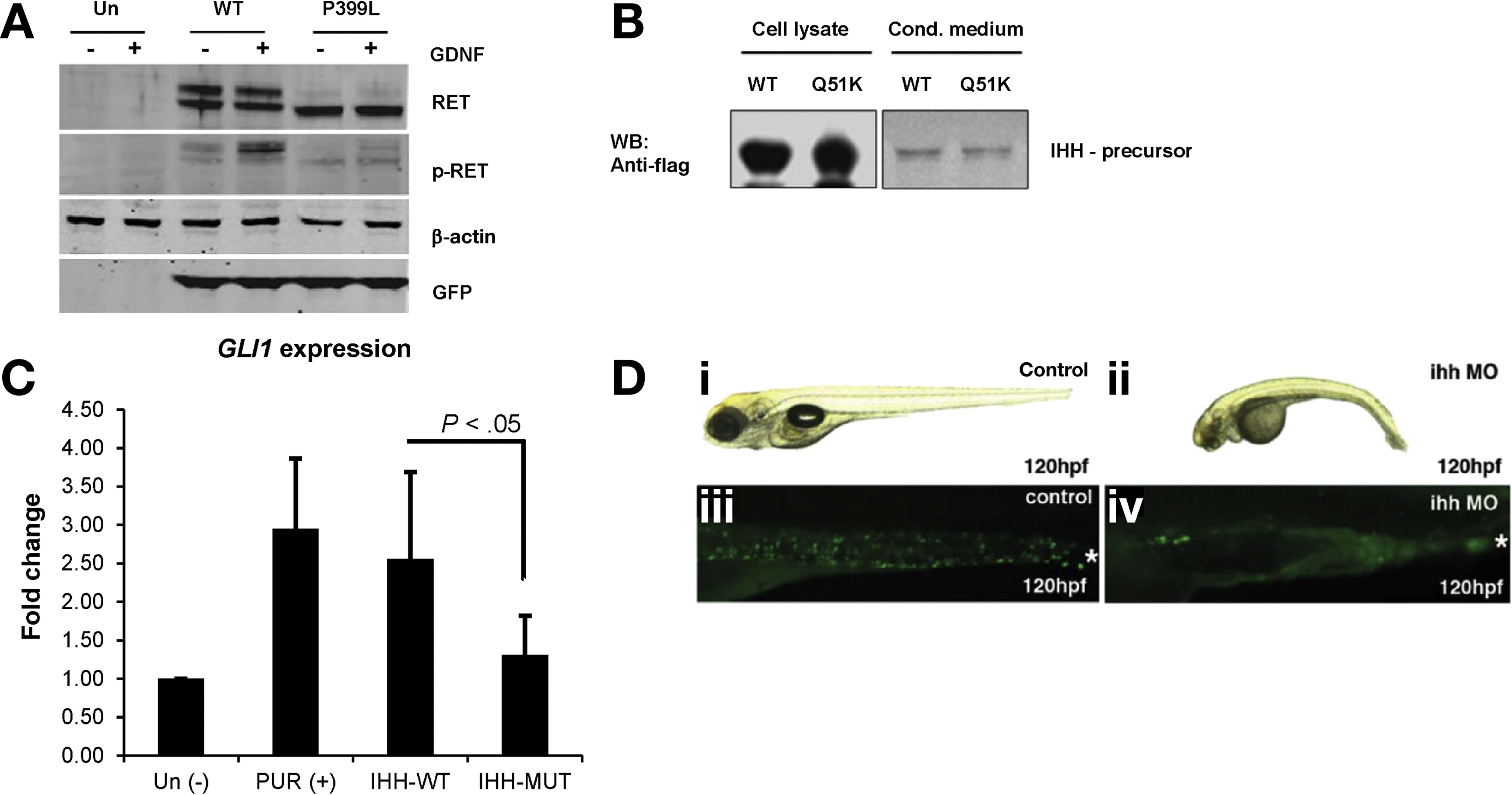Fig. 4
Variants in RET and IHH have a pathogenic nature. (A) Western blot analysis of HEK293 cells transiently expressing pCMV-RET-WT and pCMV-RET-Mut showed that the RET variant identified (c. 1196C>T, p.RET-P399L), leads to a reduction of glycosylated protein, as well as a reduction in the levels of phosphorylated RET. β-actin was used as loading control and GFP as transfecting control. (+) presence and (−) absence of GDNF (50 ng/mL). UT, untransfected. (B) Western blot analysis of HEK293 cells transiently expressing IHH-WT-FLAG and IHH-Q51K-FLAG showed no difference in the expression of IHH precursor (∼46 kDa). (C) qreal time-PCR performed in fibroblasts grown in the presence of conditioned medium containing IHH-WT or IHH-Q51K secreted proteins, showed that cells stimulated with the mutant IHH have reduced expression of GLI1 when compared with cells stimulated with the WT protein. Purmorphamine (PUR+), an activator of the Hh signaling, was used as a positive control. (D) Analysis of the uninjected control and ihh morphant embryos at 120 hpf showed that the absence of ihh led to curvature of the body, smaller eyes, craniofacial abnormalities, and a loss of swim bladder. Moreover, a decreased number of enteric neurons was observed in morphant embryos after staining with an Elavl3-specific antibody. * marks the anus of the fish.

